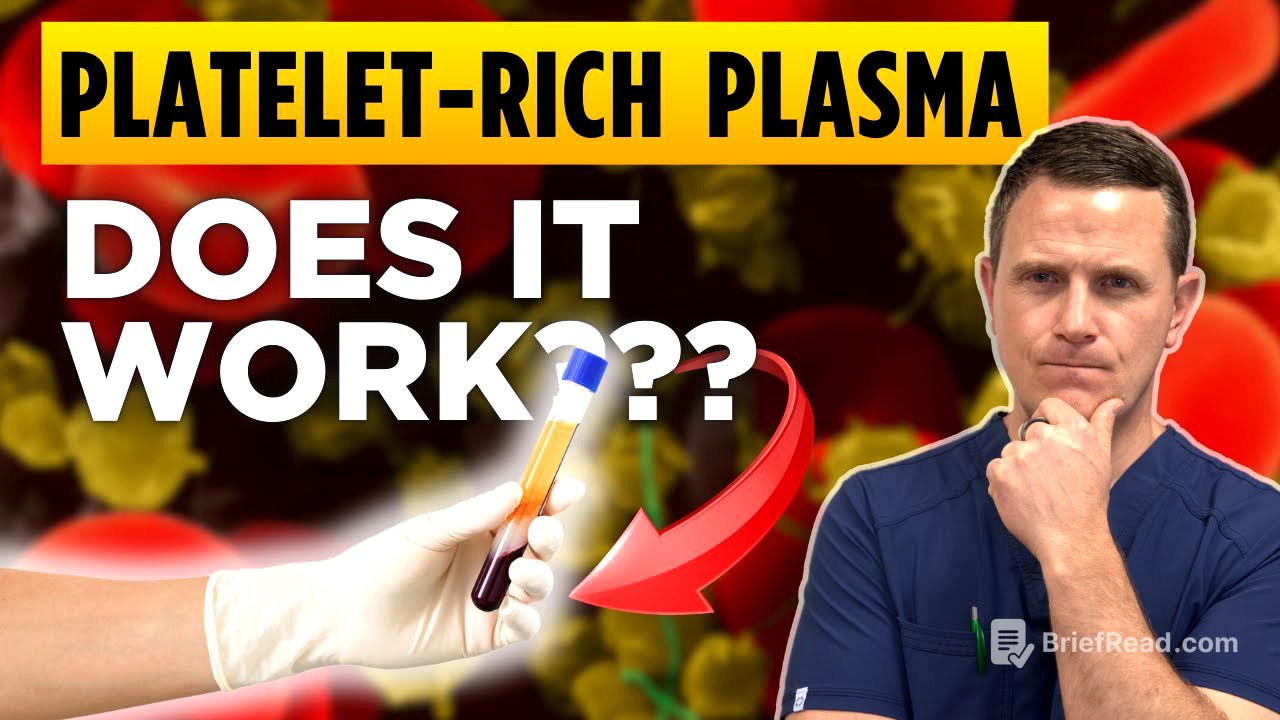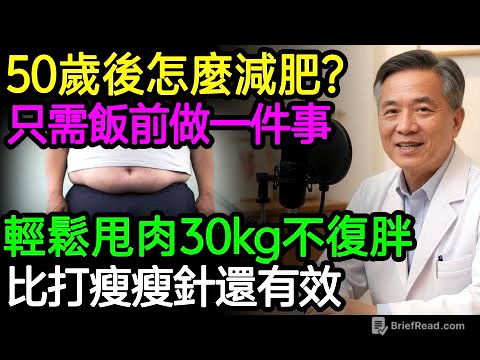TLDR;
This video explains Platelet-Rich Plasma (PRP) therapy, its applications in orthopedics, and addresses common misconceptions. It clarifies terminology like PRP, PRGF, PRF, and PPP, detailing how PRP stimulates healing by concentrating growth factors. The video also discusses the importance of early intervention, proper dosage, and the need for qualified practitioners to ensure successful PRP treatment for conditions like osteoarthritis.
- PRP stimulates healing through concentrated growth factors.
- Early intervention is crucial for effective PRP treatment.
- Proper dosage and qualified practitioners are essential for success.
Introduction to PRP and Related Terminology [0:00]
Dr. John Tait introduces Platelet-Rich Plasma (PRP) therapy and related terms such as Plasma Rich in Growth Factors (PRGF), Platelet-Rich Fibrin (PRF), and Platelet-Poor Plasma (PPP). These treatments vary in application, from orthopedics to aesthetics and even erectile dysfunction. The focus of the video is on orthopedic applications, where PRP is used to treat conditions related to cartilage, ligaments, and tendons.
Understanding PRP and the Healing Process [1:05]
PRP involves drawing blood, separating out red and white blood cells, and concentrating the platelets. The remaining platelets contain growth factors that stimulate healing, similar to how the body repairs a cut. This process is applied to joint issues like cartilage breakdown, ligament damage, and tendon problems, aiming to promote self-repair in these tissues.
Osteoarthritis and the Role of PRP [2:32]
Osteoarthritis involves the breakdown of cartilage, eventually affecting the bone. While osteopenia and osteoporosis refer to bone density, osteoarthritis specifically targets cartilage. The condition is graded from one to four, with grade four indicating severe cartilage loss. Conventional treatments like corticosteroid injections can provide pain relief but may harm cartilage. PRP, conversely, stabilizes cartilage by addressing inflammation and promoting micro-level repair.
How PRP Works and What to Expect [5:12]
PRP stimulates the body's self-healing process by injecting growth factors into damaged tissues, halting the inflammatory chemical processes in the joint. While PRP can repair surface-level damage at a micro level, it doesn't result in significant cartilage regrowth visible on X-rays. Early treatment is more effective, and while PRP can provide sustained pain relief even in advanced cases, it won't fully restore lost cartilage.
The Three P's: Problem, Pattern, and Patient [6:48]
Successful PRP treatment depends on three key factors: the problem (severity of the condition), the pattern (nature of the pain and dysfunction), and the patient (their goals and overall health). These considerations help determine if PRP is the right treatment option, taking into account the patient's age, the chronicity of the issue, and what they aim to achieve with the treatment.
Dosage and Concentration in PRP Treatment [7:38]
The effectiveness of PRP treatment is closely tied to the dosage and concentration of platelets. The required dose varies depending on the joint size, with larger joints needing up to 10 billion platelets. Many practices may fall short due to inadequate systems for concentrating platelets, leading to short-term relief. Successful PRP treatments should provide relief lasting a couple of years, achievable with the right systems, dosage, and patient selection.
Conclusion: Key Considerations for PRP Treatment [9:39]
To ensure successful PRP treatment, it's crucial to understand the details, including the practitioner's training, the technology used, and their track record. PRP has been proven safe and effective in orthopedics since the 1990s. Selecting the right provider at the right time for the right situation is essential for achieving the best results with PRP therapy.









